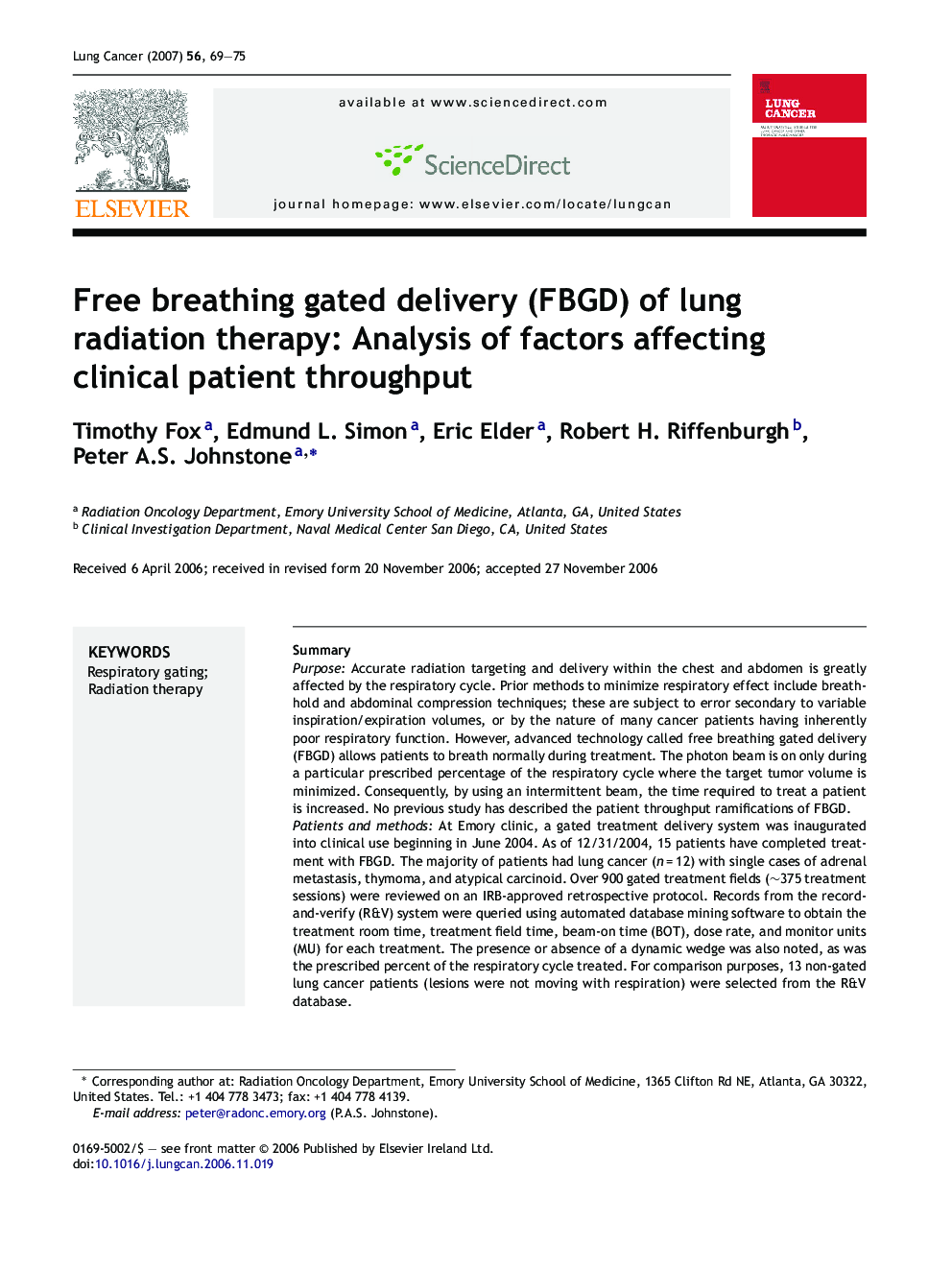| کد مقاله | کد نشریه | سال انتشار | مقاله انگلیسی | نسخه تمام متن |
|---|---|---|---|---|
| 2143820 | 1088360 | 2007 | 7 صفحه PDF | دانلود رایگان |

SummaryPurposeAccurate radiation targeting and delivery within the chest and abdomen is greatly affected by the respiratory cycle. Prior methods to minimize respiratory effect include breath-hold and abdominal compression techniques; these are subject to error secondary to variable inspiration/expiration volumes, or by the nature of many cancer patients having inherently poor respiratory function. However, advanced technology called free breathing gated delivery (FBGD) allows patients to breath normally during treatment. The photon beam is on only during a particular prescribed percentage of the respiratory cycle where the target tumor volume is minimized. Consequently, by using an intermittent beam, the time required to treat a patient is increased. No previous study has described the patient throughput ramifications of FBGD.Patients and methodsAt Emory clinic, a gated treatment delivery system was inaugurated into clinical use beginning in June 2004. As of 12/31/2004, 15 patients have completed treatment with FBGD. The majority of patients had lung cancer (n = 12) with single cases of adrenal metastasis, thymoma, and atypical carcinoid. Over 900 gated treatment fields (∼375 treatment sessions) were reviewed on an IRB-approved retrospective protocol. Records from the record-and-verify (R&V) system were queried using automated database mining software to obtain the treatment room time, treatment field time, beam-on time (BOT), dose rate, and monitor units (MU) for each treatment. The presence or absence of a dynamic wedge was also noted, as was the prescribed percent of the respiratory cycle treated. For comparison purposes, 13 non-gated lung cancer patients (lesions were not moving with respiration) were selected from the R&V database.ResultsPatients receiving FBGD required significantly more time for treatment delivery. The time required for FBGD was, on average, 5.5 times greater (range 1.2–12.2) than calculated BOT without gating. Time was further increased with the use of a dynamic wedge, which occurred in 45% (28/62) of the planned fields. The use of MV imaging also increased the time for FBGD treatment sessions by more than 7.5 min on average.ConclusionsFBGD uniformly increases the time required for RT delivery, and MV imaging and dynamic wedging even more so. Even though this technology more accurately targets tumor volumes while sparing normal tissue, the patient throughput issue may deter this technology from being implemented into busy clinical practices.
Journal: Lung Cancer - Volume 56, Issue 1, April 2007, Pages 69–75